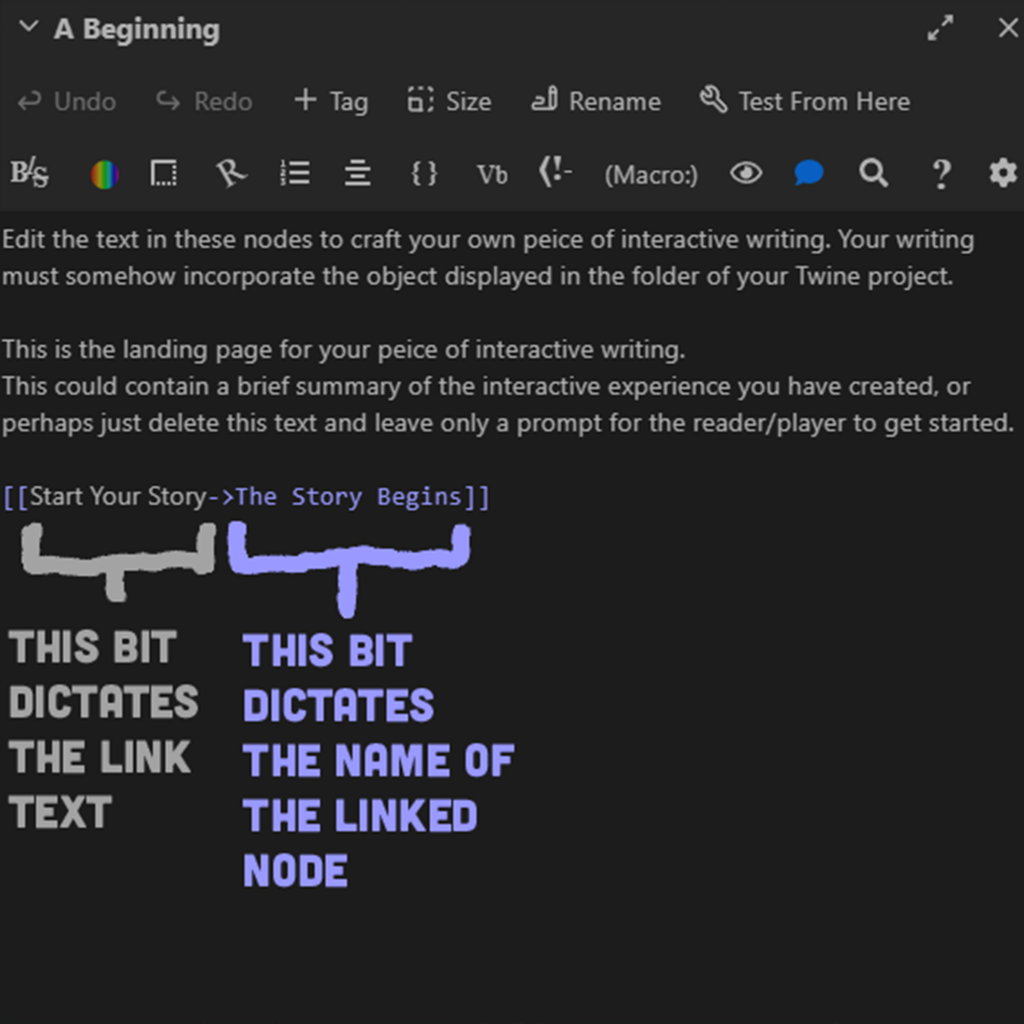Microteach Planning.
Having evolved beyond their use as ‘edutainment tools’ (Martin & Shen, 2014), videogames technologies are now being taught broadly across HE disciplines, including Fine Art subjects. When planning for my microteach for the PG Cert, I wanted to create an activity that reflected my specialism in the use of video games technologies within a Fine Art context.
Inspired by work undertaken in other institutions such as the City University of New York (Lyons & Lundberg, 2018), I decided to introduce participants to the simple game engine ‘Twine’ and demonstrate it’s accessibility and functionality as a narrative tool. My hope was to create a broader creative context for working with these tools perhaps in the vein of the kinds of Twine art games or ‘visual novels’ uploaded to community sites such as Itch.io.

Please follow the link below to find the slides and the template Twine Project that I created for the session.
Workshop Resources (Shared)
Timed Lesson Structure.
The workshop was adapted from an existing workshop plan to fit the 20 minute online session using a timed structure as follows :
Introduction to the session activity (5 Mins)
In which I went through the core concepts of the session and the session outcomes. I used my slides to structure the introduction.
The Activity : Playing through the provided interactive Twine story and attempting to open and edit the project in Twine (10 mins)
In this section I provided a link to a resources folder (linked above) containing a downloadable template Twine project and my slides. Participants could open the example Twine project using their browsers and play through using hyperlink text.
I designed the Twine template using guiding language that would prompt students in how to edit and replace the existing text to create their own story beats. The following is an example of one of my story passages / Twine nodes.

‘Edit the text in these nodes to craft your own piece of interactive writing. Try to block out the narrative beats in each node and return to refine if you have time.’
Reflections on the Medium (5mins)
For the final section of the workshop, participants were invited to reflect on the technology. Here I was looking to provoke thoughts on how this technology might be used within a wider Fine Art Context.

Feedback.
After the session we reconvened in a feedback session with participants. Here are a few takeaways from the feedback session.
- I was calm and collected whilst guiding participants through the steps required to download and work with the resource materials provided, despite participants facing some access issues from Microsoft OneDrive.
- The technology was introduced and described in an accessible way even to participants that had no experience of these kinds of tools.
- There was not enough time to explore the Twine document and it was overambitious to expect participants to be able to edit their own stories in the time given.
- The workshop plan was shared clearly in my presentation and in the provided slides.
Conclusion.
I feel that participants responded well to the material and were surprised at how accessible the Twine software was to them on their own computers. I received very enthusiastic input about the subject matter and the group seemed to engage well with the overarching theme of videogames technology and it’s uses within Fine Art Practice.
However it was evident from the rush towards the end of my session, that I had over-scoped the activity – perhaps leading to an unsatisfying experience for some participants. Not all of the participants had been able to edit the Twine project as designed to complete the activity.
I hope to continue to develop broader strategies for scoping my teaching subjects and to ensure that I structure my teaching well within a given time. I also recognise however that some technological subjects take time to teach and that it may not be possible to contain practical activities in subjects like this within one session.
References.
- https://itch.io/
- Lyons, K., & Lundberg K. (2018). TWINE using non-linear storytelling in your pedagogy, edTech, The City University of New York. https://commons.hostos.cuny.edu/edtech/faculty/newsletter/edtech-innovations-articles-issue-14-spring-2018/twine-using-non-linear-storytelling-in-your-pedagogy/#:~:text=Twine%20is%20a%20powerful%20tool,that%20leads%20to%20deeper%20learning.
- Martin, M. W., & Shen, Y. (2014). The Effects of Game Design on Learning Outcomes. Computers in the Schools, 31(1–2), 23–42. https://doi.org/10.1080/07380569.2014.879684


Leave a Reply